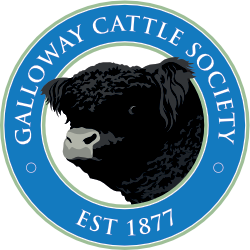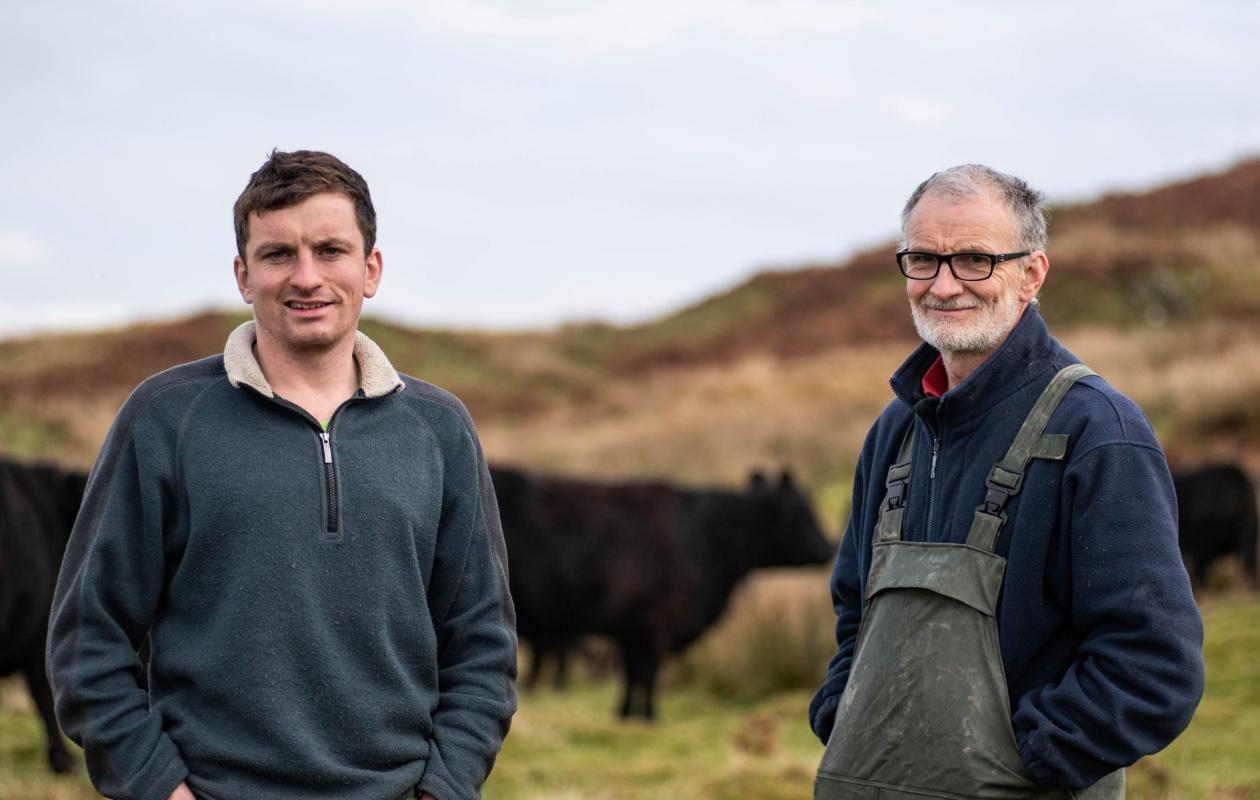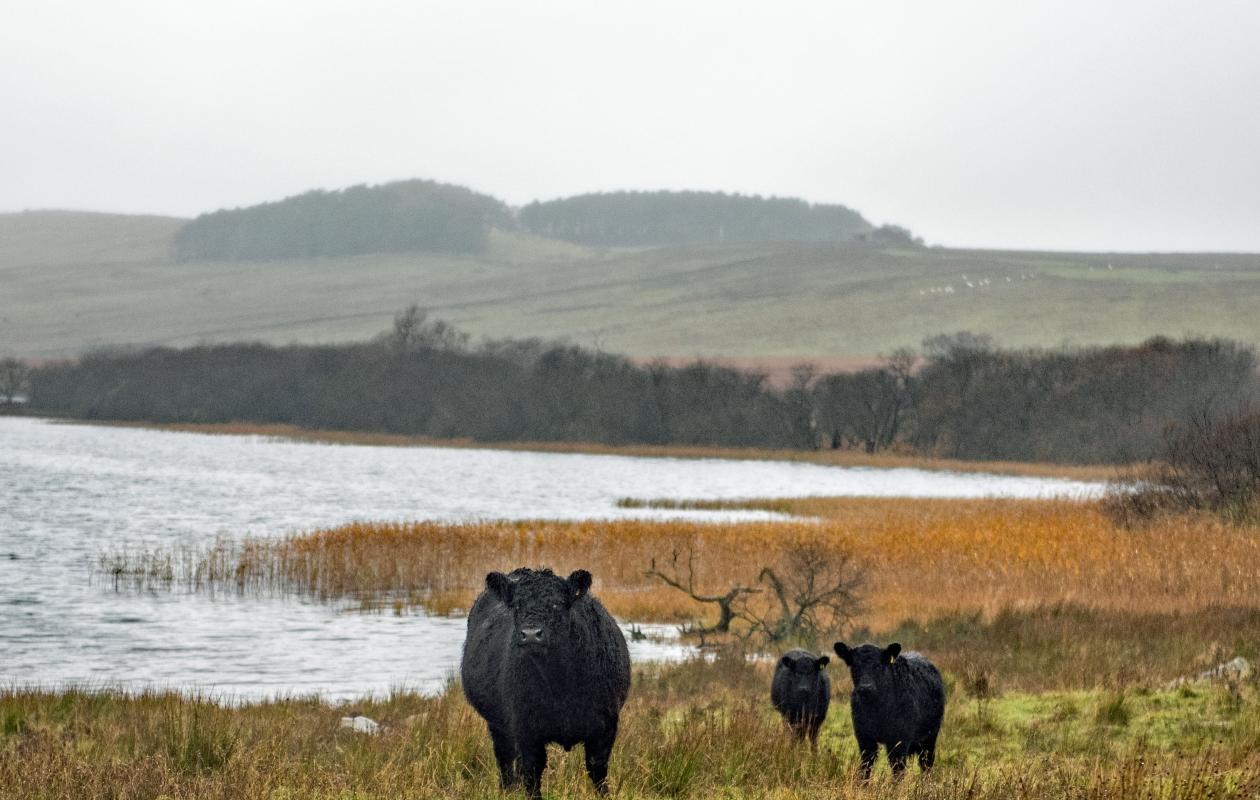Galloway cows have made a successful comeback to a severely disadvantaged farm in the Yorkshire Dales.
Andrew Haggas runs the 700 acre Grove Farm, Otterburn, near Skipton, single-handedly and he re-introduced a herd of out wintered Galloway cows to save on work and inputs 10 years ago.
Outwintering is the key to profitability. Feed, labour and vet med costs average £60 per head per year. Andrew claims they pay better than the 100 pure-bred Limousin cows they replaced.
Just before the change in the cattle enterprise at Grove Farm, Andrew made an application to put in a livery yard as a diversification and this has been a successful move.
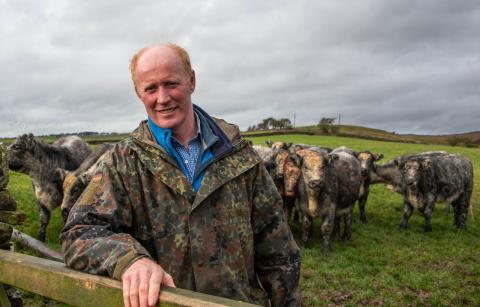
While the cattle went back to their traditional roots as Andrew’s late father Richard had farmed them in the 1970s, Andrew also switched to using Texel cross North of England Mules crossing them with a Dutch Texel or Beltex from the Swaledale sheep which produced Mule gimmer lambs. “We effectively stripped the cost out of both cattle and sheep systems”.
“I always knew they suited the farm as Dad had Galloways producing Blue Grey calves when I was growing up in the 1960s,” said Andrew. “But then farms got grants for putting up buildings for winter housing which were probably the demise of that type of cattle. Hardiness was no longer a factor.
“We kept the Blue Grey cows and I can remember Dad saying ‘We’ll wear them out and then we’ll replace them’ but they were there for years! Eventually we went into Angus-Friesian and Limousin Friesian cross cows and then pure-bred Limousin in the late 1980s.
“So, I’ve always had an affinity with Galloways and followed them via sale reports and articles. We had got up to 100 pure-bred Limousin cows when the payments switched from headage to area. I was also getting increasingly worried about walkers on the number of footpaths we have through the cattle. These two factors led to the sale of the Limousins.”
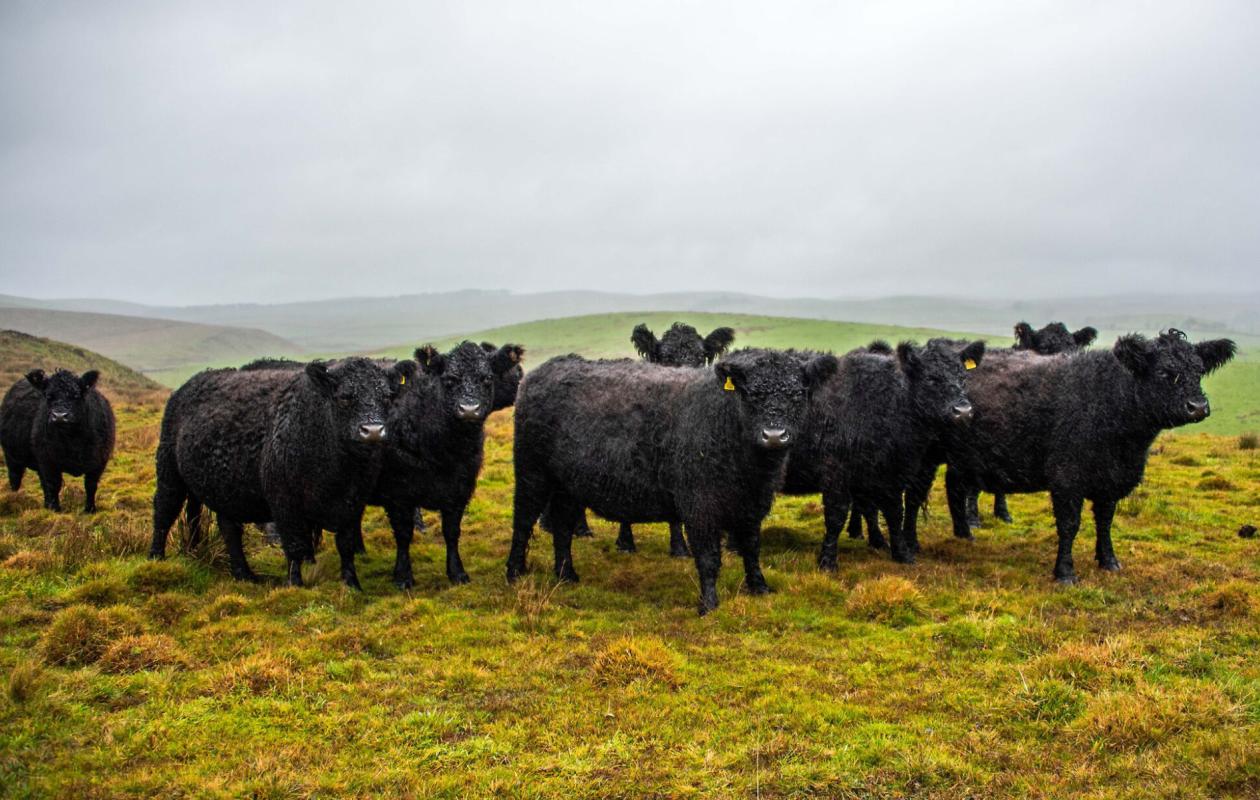
Andrew basically swapped 100 Limousin cows for 30 outwintered Galloways and a small livery yard for 20 horses run on a mainly DIY basis grazing on around 70 acres closest to the farm.
“It has worked very well, the livery cash flow is much better than anything else we could do on the farm, with minimum disruption. The horse’s graze in amongst the cattle and sheep with no problems,” said Andrew.
The farm needed some cattle to keep the integrity of the meadow ground and also to keep on top of the rough grazing. No environmental subsidies are claimed, meaning decisions are based on finances not the shackles of a scheme.
The owner-occupied farm runs up to 1,750ft and 200 acres of the 700 is mowable however only 70 acres are cut. Most of the meadow ground has been re-seeded over the years. There are a further 200 acres of rough, permanent pasture and the remainder is the higher land with most of the farm SDA. 360 acres of the farm is let out on grazing licenses.
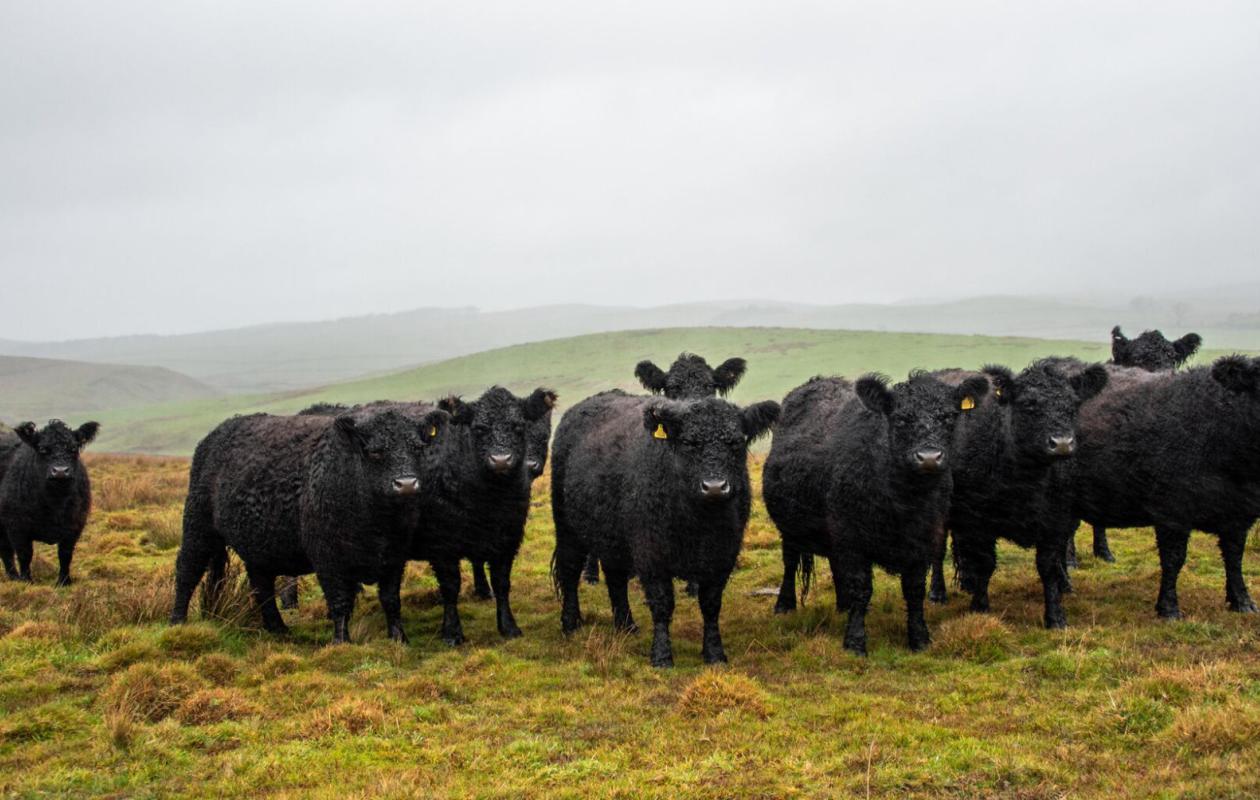
Andrew had considered the Luing but he felt the cattle were too big and heavy for the type of land so he opted for the traditional type of Galloway, purchasing most of his foundation bulling heifers from the ring at Carlisle from Gordon and Kathleen Gilligan, High Creoch, Gatehouse of Fleet. The type of Galloways he was looking for were registered heifers of medium size, quiet, well-fleshed, and above all they must have a good skin.
Over four years Andrew continued to buy Galloway females and they were bred pure for about four years until the herd numbered the required 30 cows.
Of the foundation cows, only two have been culled and Andrew will continue to buy pure bred replacements when required. The here is now crossed with the Whitebred Shorthorn bull with current herd sire the pedigree Hotbank Striker purchased from John Pattinson at Bardon Mill.
The Blue Grey heifers provide a good income and are sold privately at 16-18 months old and they make around £1,000 a head.
“They are the meat in the sandwich,” said Andrew. “Impressive figures have been produced from independent trial work on the profitability of Blue Grey suckler cows and with the erosion of subsidy from farming these lower cost but productive cows should see a resurgence.
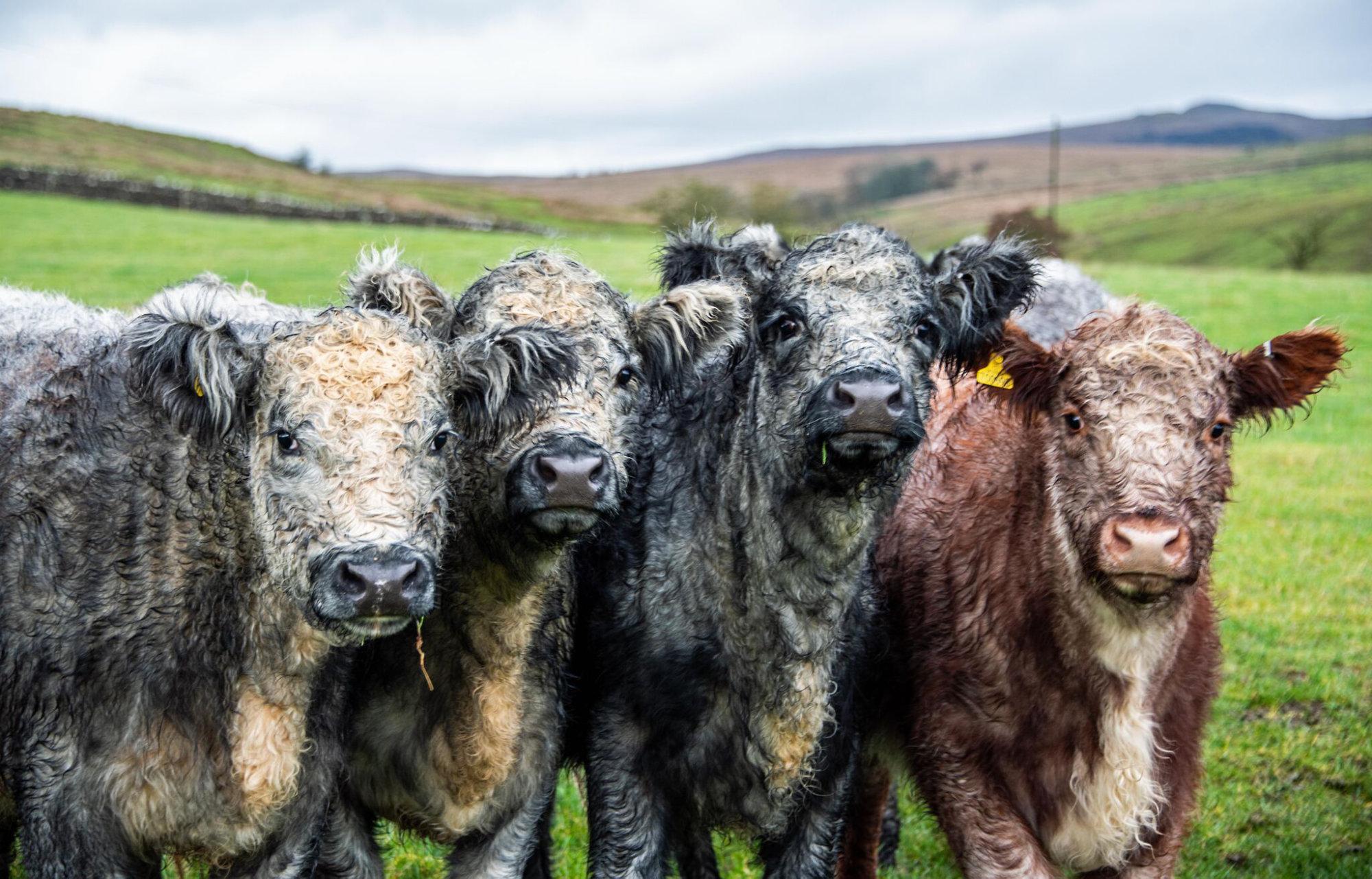
“I have the option of selling Blue Grey store bullocks at 16-18 months old but I am more inclined to run them on until they are 26-27 months old – finished, or close to it. Even sold at this age they will only have eaten 120-150 kilos of concentrates in their lifetime.”
The Galloways are run year round on 140 acres of rushy, rough pasture at 750ft above sea level. The ground is bordered by a conifer plantation which gives the cows shelter in the winter if they need it. The majority of the cows calve in May or June.
“Depending on the weather, they get some supplementary feed of hay which I take on the farm bike – there are no ring feeders. When they are calving I take a bag with some concentrate so that I can get them together easily rather than waste time riding round them,” said Andrew.
“They never leave that ground, it can get quite wet but the cows don’t crowd so they don’t make too much mess. I did think of moving them across the farm onto the better land for summer, saving the rough ground for winter, but we don’t have a staggers problem. Reducing stress by keeping them on the same ground is possibly why.”
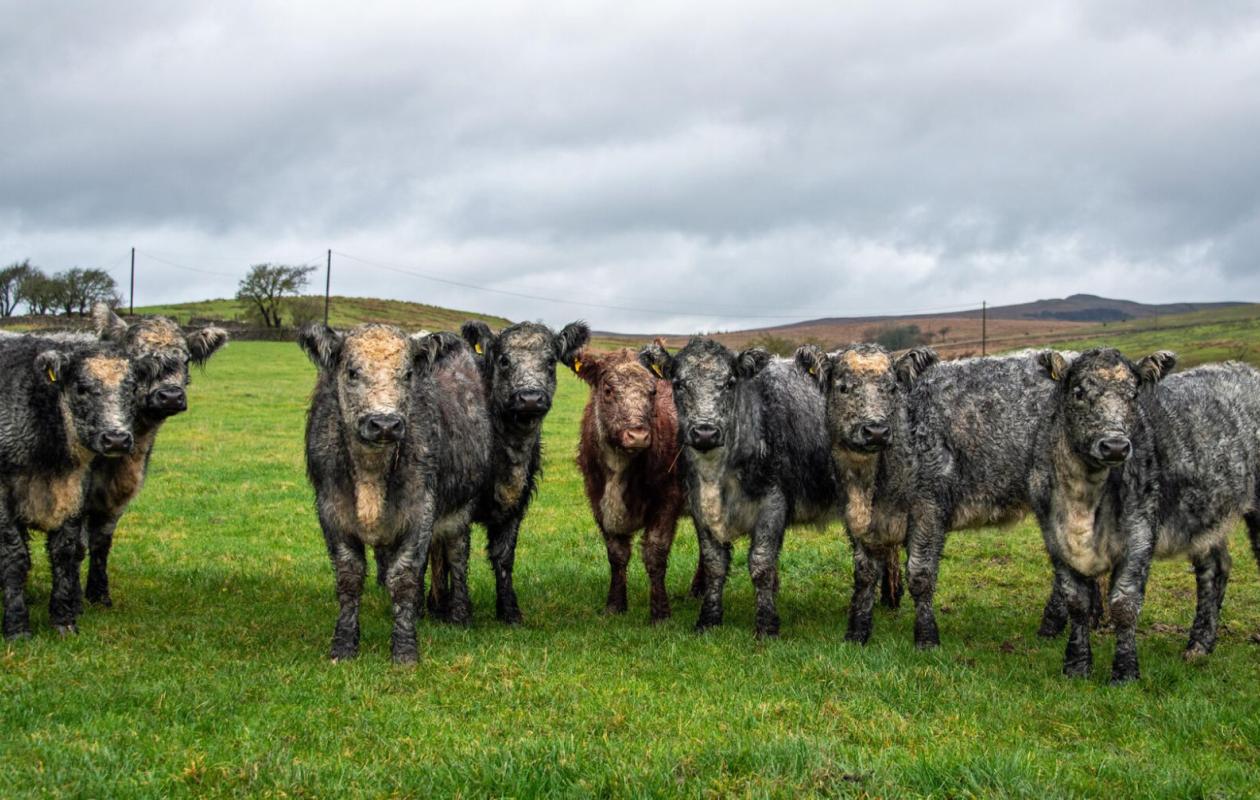
The Blue Grey calves are weaned from November to early January. They are housed and are fed haylage and up to1kg a day of an 18% calf rearer to give them a good start.
Not having to house the cows is a massive saving on labour, feed and straw. Previously, the pure Limousins were in for seven months in winter. Now all the straw needed for the cattle is what has gone through the livery and is fit to re-use as bedding, labour is down by 1.5 hours a day for seven months of the year. The farm also uses five tonnes less of fertiliser and cut 60 acres less for winter feed.
The extra space in the shed also enables Andrew to buy in 15-20 Limousin or British Blue cross heifers. These are bulled with a Limousin and sold in calf or with calves at foot through Bentham and Skipton markets.
The farm’s 400 Texel cross Mule flock is also run with low inputs. Flock re-placements are bought in from sales at Skipton and Carlisle. They are put to the Beltex or Dutch Texel with the aim of selling good conformation store lambs which have averaged £73 a head for the last two years. All the lambs are sold by mid-November with no hard feed at all through Skipton and Bentham.
Ewes are fed concentrates from mid-February for lambing in April outside if at all possible. The ewes are sold as three crop drafts at the early breeding sale in Bentham market in July. Keeping the sheep young enables Andrew to keep inputs down and the system simple. A common theme at Grove Farm.
